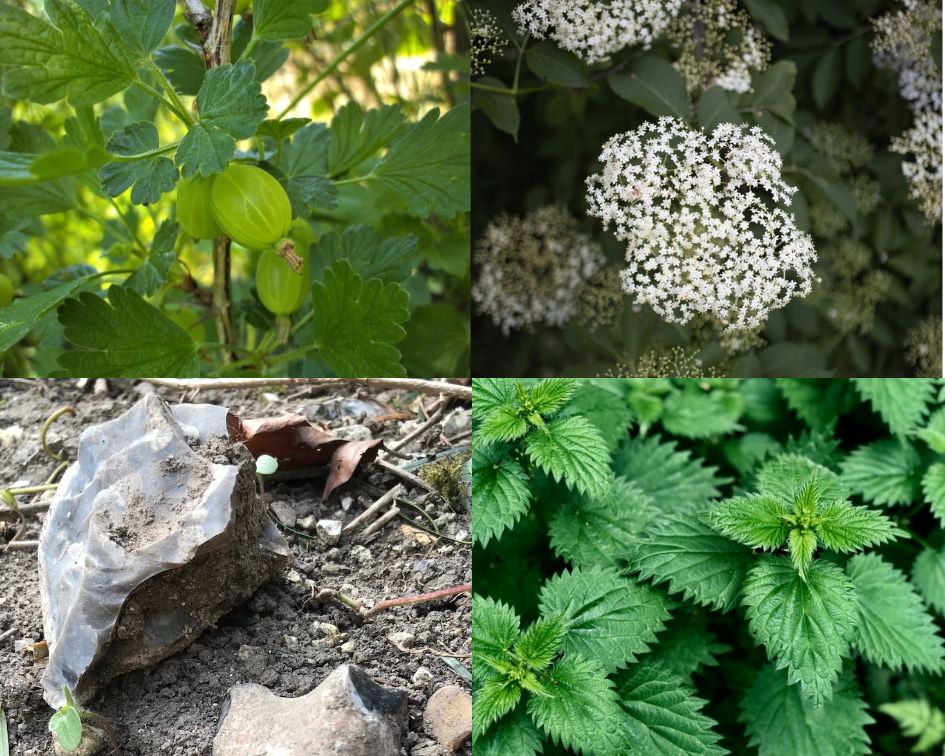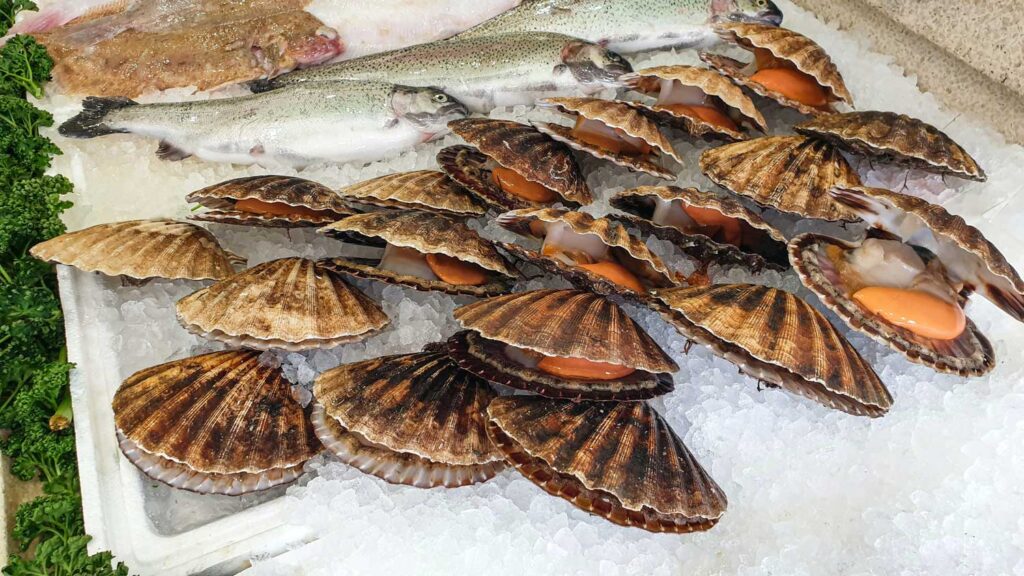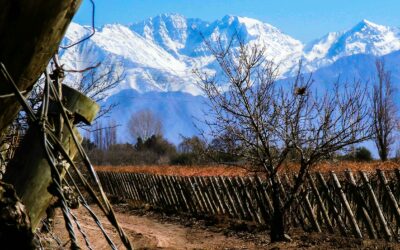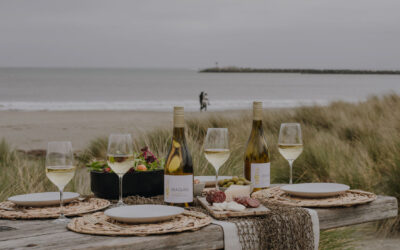It’s a fact. Sauvignon Blanc is one of the world’s most widely-planted grape varieties. We think of it as synonymous with New Zealand, because of its global popularity.
So it may surprise you to hear that it’s spiritual home actually lies in France. Yep that’s right, slap bang in the heart of the Loire Valley.
Let’s find out what makes Loire Sauvignon Blanc unique, how it tastes, the appellations to look for and what foods to pair them with…
What does Loire Sauvignon taste like?
Gooseberry, blackcurrant leaf and nettle are common descriptors used to describe the herbaceous profile of Loire Sauvignons.
Compared with their kiwi counterparts, they’re also more floral, think elderflower, and have a tighter, yet less pronounced acid structure.
The most prized examples from Sancerre and Pouilly-sur-Loire (labelled Pouilly-Fumé), show the most minerality. Pouilly-Fumé takes it to the extreme, showing a characteristic flinty overtone.
Both appellations will generally benefit from at least 2-3 years bottle ageing to allow the wine to harmonise.
There’s no question about it, Sauvignons from the Loire taste very different to those from New Zealand.

Sauvignon Blanc appellations to look out for
Most of the region’s Sauvignon Blanc is grown in the eastern half of the valley. Beginning with the area surrounding Tours and eastwards into what’s known as the Centre region.
Moving from west to east, our first major appellation is AOC Touraine. These wines are easily some of the best value examples and are relatively easy to track down. A decent domain-bottled wine should set you back £10-12. While you can pick up perfectly good co-operative versions from about £7.
Two further Touraine scions worth seeking out are Touraine Oisly and Touraine Chenonceaux. Both are comparatively small in production terms but quality is superior, especially in Chenonceaux. The best Touraine wines balance floral, fruit and mineral characteristics giving them elegance and a refined feel.
Move along from Touraine and you can find the AOC’s of Reuilly and Quincy. It tends to be hotter and drier here than most of the other Central Loire appellations. Consequently, Sauvignon ripens earliest here.
The wines lean more towards a citrus (lemon and grapefruit) and floral profile with more pungent herbaceous notes. You can pick up a decent example of either wine around the £13-15 mark.
The Sancerre & Pouilly-Fumé lookalikes
Surrounding the famous neighbours of Sancerre and Pouilly-Fumé are two very worthy AOC wines. Coteaux du Giennois to the north of Pouilly-sur-Loire and Menetou-Salon, abutting the south-western tip of Sancerre. Both show quality and characteristics that closely resemble their famous neighbours, but at friendlier prices.
Coteaux du Giennois reveals a linear, stony freshness and flavours resembling yellow-skinned fruits, including quince. While Menetou-Salon is a little weightier, with a musky tone and a Sancerre-like structure.
You can pick up a decent bottle of the former between £10-13 and Menetou ranges from £12-18. Although it is possible to find a couple around the £10 mark.
Pouilly-Fumé & Sancerre are the real deal!
Now onto the main event, Pouilly-Fumé and Sancerre.
On the right-bank of the River Loire lies the town of Pouilly-sur-Loire, home to AOC Pouilly-Fumé.
Just to confuse matters, something the French authorities seem to excel at, there’s a separate appellation for Pouilly-sur-Loire. This is actually made from the local Chasselas variety and is something of a rarity these days. It doesn’t have anything like the definition of flavour or longevity of its more fashionable sibling.
“Did you know Sancerre was once famous for red wine?“
Directly opposite Pouilly-sur-Loire, on the other side of the river, lies the small hillside town of Sancerre. This is the name that helped put the entire region on the map around the Middle Ages. Though rather ironically, it was for red wines made from Pinot Noir.
When phylloxera wreaked havoc in the late 19th Century, vignerons made the switch to Sauvignon Blanc. The main reasons being that it’s more hardy and productive than Pinot.
The rest, as they say, is history. Although you can still find small quantities of rosé and red Sancerre made from Pinot.
The secret behind Pouilly-Fumé & Sancerre’s success lies in the soil
The common element that distinguishes Sancerre and Pouilly from the rest of the Loire crowd is soil. Or should I say, soils.
From chalky/limestone soils, known locally as terres blanches (with a higher marl content) to caillottes (which are more stony). They are part of the same band that runs from the white cliffs of Dover, through Champagne and nearby Chablis.
Flint, known locally as Silex, also features in both Sancerre and Pouilly, but more so in the latter. This is where that very distinctive smoky tone comes in. Some of the best wines from both appellations come from these unique soils.
Pouilly-Fumé & Sancerre’s flavour profile
The comparatively cool, continental climate helps to accentuate the steely nature of Sauvignon that’s produced in these sub-regions. Both wines tend to be very linear in style. That is to say they feel quite tightly-wound in the mouth, around a fine thread of acidity.
Sancerre can show exotic fruits and orange blossom, especially in warmer vintages. While Pouilly-Fumé leans more towards citrus fruits and gun flint. Both wines need a few years to evolve and anything from 5-10 years for the best cuvées.

Regional highlights – food & wine matching
As is often the way in Europe, wine evolution is closely linked to that of gastronomy. The wine styles that we see today are born from local and regional dishes established over decades, even centuries. The wines of the Loire are as versatile as they are varied, perfectly mirroring the multifarious culinary dishes.
Shellfish; such as oysters, scallops and clams, are a speciality up and down the river, particularly towards the western end. They’re the perfect match for the citrus, floral and flinty Pouilly-Fumés.
Freshwater fish have been caught and eaten here since pre-Roman times. They’re often served with a sauce like beurre blanc, so the floral and more mineral-edged Sauvignons pair beautifully. Namely Touraine, Sancerre and Menetou-Salon. Heartier fish stews are heavenly with a mature Sancerre from a decent grower with up to ten years bottle age.

There’s fossilised proof that goats existed in the region long before people. Consequently, some of the world’s finest goat’s cheeses hail from here. Quincy and Reuilly work particularly well with these. Crottin de Chavignol makes a stunning combo with a decent domain-bottled Sancerre.
A few Loire Sauvignons worth trying
Here are some of my favourite examples of Loire Sauvignon that are readily available through specialists:
Sauvignon de Touraine, Domaine Patrick Vauvy
Touraine Chenonceaux ‘La Long Bec’, Domaine des Echardières
Coteaux de Giennois, Clement & Florian Berthier
Menetou Salon ‘Morogues’, Domaine Henri Pellé
Sancerre, André Dezat et Fils
Sancerre Domaine François Crochet
Pouilly-Fumé, Château de Tracy
Pouilly-Fumé, Domaine Masson-Blondelet (various cuvées)
Pouilly-Fumé, Baron de ‘L’




